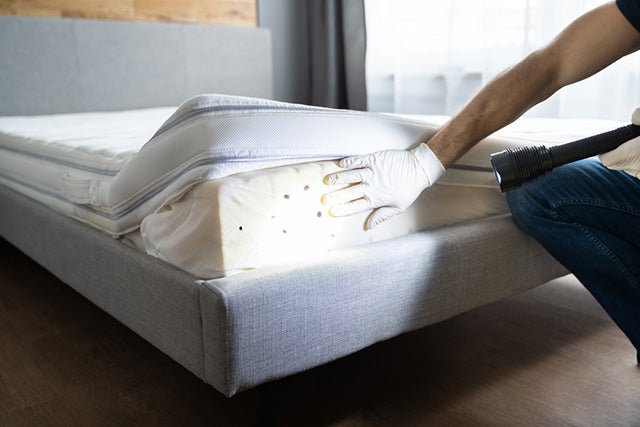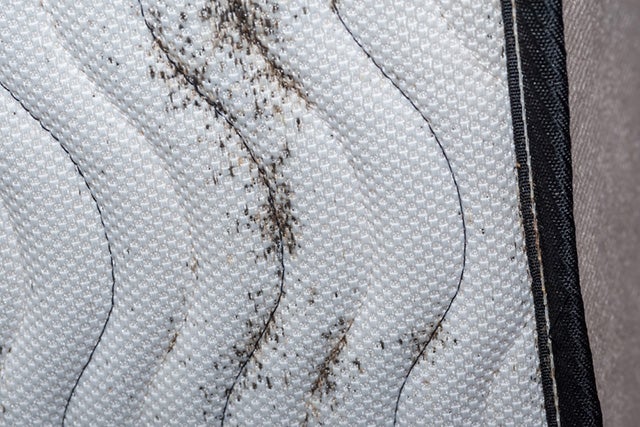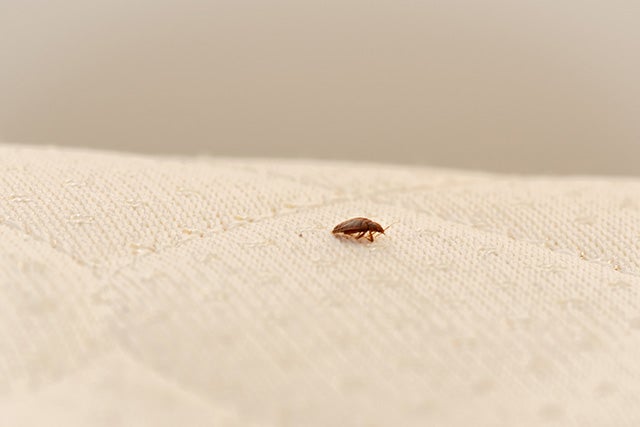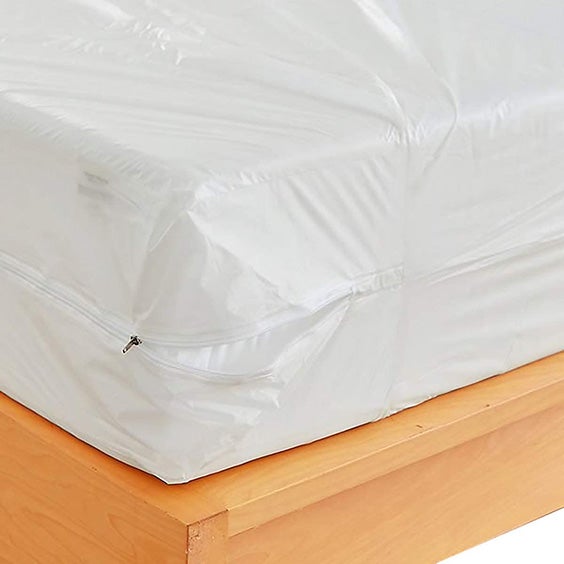Can you imagine lying in bed at night and feeling dozens of tiny insects crawling on your skin and biting you? Sadly, this isn’t a scene from a horror movie but something that can happen if you have a bed bug infestation. Where do bed bugs come from? Can you prevent an infestation? Can bed bugs get through a plastic mattress cover? Let’s find out!
You might want to read: Best Bed Bug Killer
Where Do Bed Bugs Come From?
It is estimated that these insects have been present for thousands of years. Scientists have discovered fossilized insects dating back more than 3,500 years. There are speculations that the origins of these bugs are in the Middle East in caverns that humans and bats inhabited. In ancient times, they were frequently utilized as a home treatment.
If you end up with bed bugs in your home, they likely come from an infested area. In multi-unit structures, they can move freely between individual rooms. They can hitch a ride in baggage, purses, handbags, or backpacks.
Also, it’s strongly recommended that individuals never bring used furniture into their homes, especially mattresses, without adequately inspecting them for symptoms of bed bugs. You are likely unable to spot a bed bug problem if you are not trained, so you should think about having a professional specializing in pest treatment inspect the furnishings.
You might want to check: Everything You Need To Know About How To Get Rid Of Bed Bugs Naturally
How Do You Know You Have Bed Bugs?
You may have bedbugs if you wake up with itching spots you did not have before you went to sleep. This is especially likely if you purchased a used bed or other old furniture around the same time the bites began. Additional indications that you may have bedbugs are the following:
- There are traces of blood on your linens and pillowcases.
- Bedbug excrement, which appears as dark or rusty patches, can be found on mattresses, sheets, pajamas, and walls.
- Bedbug feces, shredded skin, and egg shells can be found where bedbugs like to hide.
- An awful, musty stench that comes from the bug’s scent glands.
If you have reason to believe there is an infestation, you should remove all of the bedding and carefully inspect it for any traces of the bugs or their feces. Take off the dust covering the base of the box springs and look closely at the seams where the wood was framed. To remove the cloth, peel it back from the wood frame where it has been attached.
Check for bed bug infestation signs around the bed, at the edges of your carpets, in power outlets, books, telephones, and other small spaces where bugs might crawl into. Carefully examine all the clothes in your wardrobe as beg bugs are likely to attach to clothing fibers.
You might be interested in: Best Bed Bug Sprays
Can Bed Bugs Get Through a Plastic Mattress Cover?
Bed bugs are unable to get through a plastic mattress cover as long as it’s a full encasement. They cannot penetrate the protective layer of plastic, and as a result, they are unable to access your blood.
The fact that bed bugs can’t eat through plastic isn’t a problem for them because they don’t need to. Bed bugs can go below waterproof mattress coverings since the protectors do not entirely encapsulate the mattress.
To prevent mattress infestation, you must have a mattress encasement specifically designed to repel bed bugs. There’s no such thing as a mattress cover that’s practical against bed bugs. Instead, you should search for the word “encasement” specifically.
Tips for Getting Rid of Bed Bugs
To eliminate bed bugs from your home, you have to identify the locations where they spend their time and start the cleaning process from there:
- Take fabrics such as curtains, clothes, carpets, and bed sheets.
- Wash them in boiling water and use the highest dryer setting.
- Clean plush toys, shoes, and whatever other items are machine-washable.
- Use a stiff brush on mattress seams get rid of bed bug eggs.
- Vacuum the bed and its surroundings as often as you can.
- After you vacuum, remove the bag, place it in another plastic bag, and throw the trash outside immediately.
- Use a zippered mattress cover to ensure no bed bugs get in or out.
- Avoid clutter in the bedroom.
- Buy a new mattress if your existing one is infested beyond cleaning.
Should You Call an Exterminator?
Chemical treatments are typically required to get rid of bedbugs completely. However, cleaning up contaminated areas can help restrict their population. Since this process implies using harmful insecticides, it’s best to call in a professional exterminator. Do not apply any treatments on mattresses unless the product label states they can be used on bedding.
In most cases, hiring an experienced pest control professional specializing in bedbug eradication is the best option regarding safety and efficacy.
Tips for Avoiding Bed Bugs
Here’s what you can do to avoid unwanted bed bugs. Just keep in mind some tips may need ot be repeated for best results.
- Get rid of the excess stuff.
- Regularly vacuum, making sure to get under and behind the mattresses.
- Flaking wallpaper should be fixed or removed, and loose faceplates on electrical outlets should be tightened.
- Inspect any apertures or entry points on walls that you and your neighbors share.
- When purchasing pre-owned or refurbished items, exercise extreme caution.
- You should double inspect everything before putting it in your vehicle and examine it after assisting a buddy in relocating.
- Don’t buy second-hand mattresses.
The Verdict
Getting rid of those nasty bed bugs is a long and arduous process that may necessitate the help of family, neighbors, and landlords. It may take its toll on you mentally and physically. Calling in professional exterminators is another added expense.
Remember that bed bugs are more of an annoyance than a health risk and that you can prevent or manage infestations with proper precautions.
Photo credit: Hananeko_Studio/Shutterstock;
whitejellybeans/Shutterstock; kitzcorner/Shutterstock;
Andrey_Popov/Shutterstock






